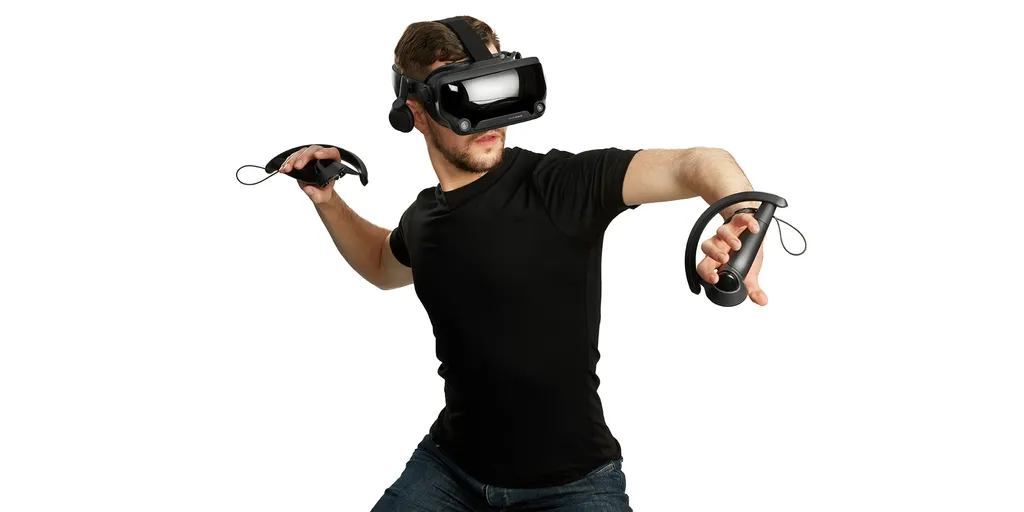Valve is still exploring wireless VR possibilities, a company representative confirmed in a statement made to UploadVR.
About one year ago the first Valve Index headsets started arriving to buyers and it brought to PC owners one of the best VR experiences on the market. In an article on Friday I outlined how comfortable it still is to use an Index for extended periods of time, but how difficult it is to recommend the system when there is no wireless option and there are other easy-to-setup wireless experiences on the market, like Oculus Quest.
During the launch party for the headset last year Valve President Gabe Newell commented they were looking into “several methods to do untethered Index,” which was his latest comment on the subject following an investment in Nitero’s wireless chip business (before it was acquired by AMD) and Newell’s reported statement in 2017 that wireless VR was a “solved problem.”
“We’re excited about the promise of wireless VR and are continuing to explore its possibilities,” Valve’s latest 2020 comment explains.
VR Market In Transition
The 2020 VR market was upended by the spread of COVID-19. Companies and partnerships were thrown into disarray, affecting the timelines for new products and the available stock of current systems.
There’s still a two month or longer delay for Valve Index from the time you order it to the time it arrives and Valve also commented to UploadVR that “we are continuing to make every effort possible to keep up with the ongoing demand and deliver units in a timely fashion, while navigating the challenges of shipping during the pandemic. We appreciate everyone’s patience, and we’ll let you know when we have more specifics.”
Facebook, meanwhile, accounts for roughly 45 percent of the VR headsets in use on Valve’s Steam platform, which is where tens of millions of gamers buy their PC games while being home to many of the most sought after VR games, like Skyrim VR and Half-Life: Alyx. Last month, Oculus Quest was used more with Steam than all Windows Mixed Reality headsets combined — a notable moment for a headset that didn’t officially support PC VR games until November 2019. We believe most of those Quests connecting to Steam use either the Oculus Link wired USB connection or the wireless Virtual Desktop sideloading option.
The Link option compresses scenes to a significant degree to send them over USB connections while Virtual Desktop also competes with other Wi-Fi network traffic to deliver wireless VR, a situation that can lead to uncomfortable experiences for some.
Wireless Race
Based on comments made by Oculus technical guide John Carmack at last year’s Oculus Connect, we believe it is likely a priority at Facebook to make a dedicated wireless Link between Oculus Quest and PC. For instance, a dongle that plugs into a USB port could use existing Wi-Fi bands supported by the Quest and, unimpeded by other network traffic, might maintain a more consistent experience. Such a convenient accessory — something much easier to install than the earlier Vive Wireless Adapter — would likely have a dramatic effect on both PC VR usage and on the mix of headsets using Valve’s Steam.
Index, though, isn’t a standalone unit and doesn’t contain a battery so if Valve is working on a wireless solution for the headset it would likely be different from whatever Facebook develops. Valve, of course, also shipped the Steam Link box in 2015 to extend “your Steam games library to any room of the house via your home network.” Valve stopped making Steam Link over the last two years and switched to a service which can stream your traditional Steam gaming library to many different devices, including Android and iOS.
Could Valve make something like a “SteamVR Link” that would make an untethered headset of not just Index but other PC VR headsets? Such an accessory would likely have a dramatic effect on PC VR usage all its own, but obviously, this most recent statement doesn’t provide any indications one way or the other.





























